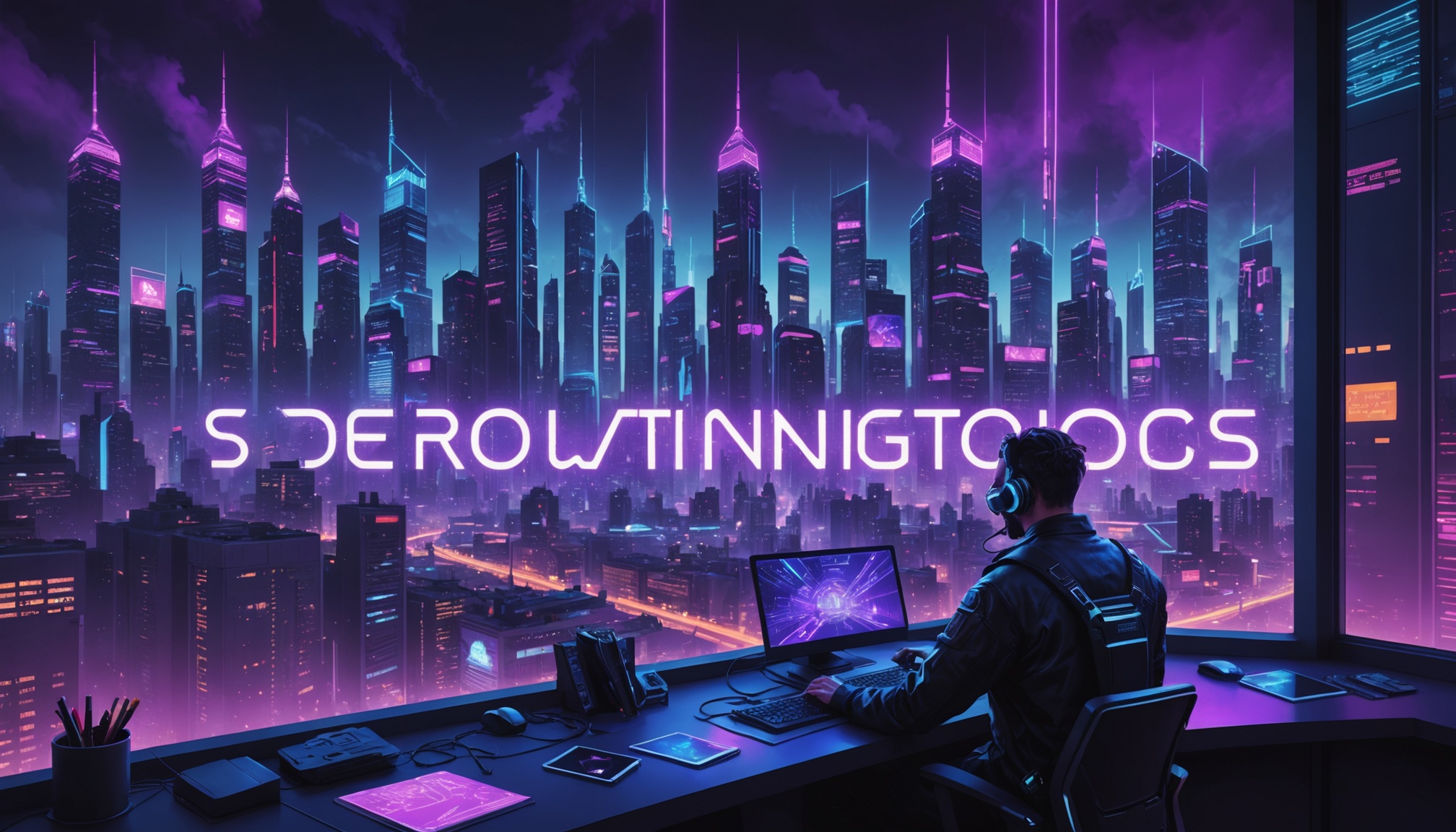Discover content creation software
If you’re looking for content creation software that helps your team produce better content faster, you’re in good company. In an increasingly competitive digital world, having robust tools isn’t just a nice perk, it’s essential. You might have grand ideas about how to boost your search rankings, engage more visitors, or create content that truly resonates with your audience. But without a system that supports everything from brainstorming to final edits, those ideas might never see the light of day.
Content creation platforms and related solutions can calm the chaos by giving you a place to collaborate, plan, optimize, and even publish content. Before you invest time and energy exploring your options, it’s helpful to understand what such software can do for you, how to align it with your goals, and which features are truly indispensable. By the time you finish reading, you’ll have a clearer picture of the different solutions out there, the benefits they bring to your workflow, and some real-world tips to make each tool work for you.
Recognize the value of great content
Let’s start with the big question: Why should you care so deeply about your content? Effective content is the backbone of digital marketing, and it’s key to winning new customers, retaining loyal fans, and advancing your brand’s authority.
- According to multiple studies, content marketing can cost up to 62% less than traditional advertising, with the potential to generate significantly more leads (Contentoo).
- Ever notice how strong brands always seem to be in your newsfeed or search results? That’s the power of consistent, high-quality content. Even if people don’t buy right away, you establish familiarity and trust.
When you focus on creating helpful materials—like blog posts, white papers, videos, and podcasts—you position yourself as an industry expert. That authority encourages visitors to keep coming back to learn more, and it nurtures relationships far beyond a single page view. The right content also plays well with search engines, which could turn your website into a high-ranking resource that new audiences discover organically.
Emphasizing people over bots
Though AI-driven solutions can automate some parts of your workflow, the best results emerge when there’s still a human behind the curtain. Many experts suggest pairing automation with your own expertise so you can produce content that resonates. Tools that rely on AI alone may churn out copy that sounds bland, but if you add your unique tone and input, you get something captivating and correct.
Expanding your reach
When you choose a content creation platform that aligns with your goals, you open the door to new channels and audience types. For instance, you might start handling blog posts, videos, and social media in one central system, enabling better consistency in brand voice. It also becomes easier to repurpose content—your blog post can become an email newsletter, a discussion prompt on LinkedIn, or an infographic for your next presentation.
Identify key features to check
Before you commit to any platform, pause to define your objectives. Do you need a system that emphasizes SEO analytics? Perhaps a user-friendly editing environment with real-time comments is non-negotiable? Understanding your specific needs ensures you don’t overpay for features you’ll never use—or miss out on must-haves that can fuel your growth.
Below are key features worth scrutinizing:
1. Seamless collaboration
Content creation often involves multiple stakeholders—writers, editors, designers, and managers. You want a system that makes it easy to delegate tasks, share feedback, and track updates without the dreaded email overload. Platforms like Google Docs, Microsoft 365, and Notion are favorites for their real-time collaboration features (Roketto). If you’re aiming to streamline your entire workflow using specialized content strategy software, look for an option that integrates all these elements in a single dashboard.
2. Automated workflows
Automation can save you countless hours. Certain tools provide content calendars that automatically populate tasks, due dates, and reminders. Others let you schedule publishing times, compare performance metrics across different channels, and keep your team updated. This way, you knock repetitive tasks off your list so you can focus on the creative side.
3. AI-enhanced editing and optimization
Grammarly, Jasper.ai, and other AI-powered tools have gained popularity for a reason. They catch grammar issues, improve clarity, and can even suggest new directions for your content. You’ll find that many “all-in-one” content creation solutions bundle these capabilities to supercharge your writing process. However, keep an eye on how fully automated recommendations align with your brand voice.
4. Built-in SEO features
When it comes to digital marketing, SEO is king. It’s not just about sprinkling keywords everywhere. Solid SEO features help you identify relevant search terms, track your content’s positioning in search rankings, and optimize it so search engines and AI chatbots will find you more easily. Platforms like Surfer, Clearscope, and content optimization tools help you refine structure, length, and keyword selection, while highlighting where you might have gaps.
5. Analytics and reporting
If you can’t measure it, how do you improve it? Search for an option that offers comprehensive analytics—page views, time on page, bounce rates, conversions—so you know exactly what’s working (and what isn’t). Some systems even pull advanced data, like heatmaps or in-depth engagement metrics, highlighting what content resonates with your audience and how you can calibrate future pieces to get better results.
6. Access to top-tier talent
Sometimes, your internal team can’t handle everything in-house. That’s when having access to vetted freelance networks can help, especially if you want to scale up quickly. Platforms such as Contentoo provide both software tools and a talent marketplace (Contentoo), so you can match your needs to expert writers or designers right away.
Explore top picks and categories
Now that you know what core features to look for, let’s dig into popular categories of content creation solutions and name some standout tools. Think of this as a buffet—choose the ones that solve your specific challenges or combine them for an all-around approach.
Writing and editing platforms
- Microsoft Word / Google Docs: Classic but still relevant. They’re the foundation of many workflows for drafting, editing, and track changes.
- Notion / Dropbox Paper: Great for teams that value minimal clutter and real-time feedback. Notion also doubles as a problem-solver for project management and internal documentation.
- Grammarly: A tried-and-true grammar checker that also offers style and clarity improvements. Perfect if you need quick wins on readability.
SEO optimization platforms
- Surfer: Trusted by over 150,000 creators for real-time data on keywords, suggested structure, and an AI Content Detector to measure authenticity (Surfer SEO).
- Clearscope: Beyond just keyword guidance, Clearscope focuses on data-driven insights and let you keep ranking with ongoing content monitoring (Clearscope).
- MarketMuse: Designed to help you understand the depth of content you need to outrank competitors, it uses AI to spot gaps and build out topic clusters (MarketMuse).
- Scalenut: Helps you locate fresh ideas, handle quick SEO fixes, and keep your content calendar full with minimal effort (Scalenut).
Workflow or project management solutions
- Asana: Prioritizes tasks, sets deadlines, and helps teams keep communication in one place. Ideal for ensuring projects don’t slip through the cracks (Gillian Perkins).
- Trello: A classic board-based manager that offers an easy overview of where your content stands at a glance.
- Monday.com: Similar in concept, with a slick interface for capacity planning and advanced reporting.
AI writing and outlining assistants
- Dashword: Specializes in creating content briefs, optimizing existing articles, and monitoring how everything performs post-publication (Dashword).
- Frase: Quickly surfaces competitor headings, keywords, and frequently asked questions, turning your research time from hours into minutes (Frase).
- WriterZen: A multi-feature platform offering topic discovery, keyword exploration, AI-assisted drafting, a plagiarism checker, and more (WriterZen).
All-in-one content creation suites
- Copy.ai: Integrates an AI content generator with a project manager so you can plan, create, and optimize from one place (Copy.ai Blog).
- Outranking: Known for SEO-focused content creation, with a built-in system to craft original, fact-based posts that rank and convert (Outranking).
- NEURONwriter: Offers a streamlined approach to semantic SEO and user-intent optimization, aided by Google SERP competition data (NEURONwriter).
- Rankability: Features AI tools that help you write, optimize, and analyze content for Google or chat-based search platforms. Used by more than 5,000 agencies worldwide (Rankability).
Adopt a winning workflow
Even top-tier content creation platforms can flop if you don’t have a clear system in place. Your workflow is how you transform raw ideas into fully formed, high-value content. Below is a simple step-by-step framework to ensure consistency, clarity, and creativity:
- Brainstorm and ideate
- Use a technique like mind mapping in Notion or Trello.
- Pin down your focus keywords (or broader themes) with SEO tools such as Surfer or Clearscope.
- If you want deeper planning strategies, consider exploring content planning tools.
- Create outlines
- Sketch out your headings, subheadings, and bullet points.
- Takes cues from data gathered by AI-driven tools like Frase or Dashword, which compile competitor insights, stats, and frequently asked questions.
- Keep the 5 C’s of successful writing in mind: clarity, consistency, creativity, credibility, and a compelling call-to-action (Responsify).
- Draft and collaborate
- Use a shared document in Google Docs or Dropbox Paper for real-time collaboration.
- Tag your teammates for feedback or additional ideas.
- Save time using AI-suggested copy from content creation solutions, but apply your personal voice to keep it engaging.
- Optimize and refine
- Integrate your chosen seo writing tools to refine your on-page presence.
- Adjust headings, keyword usage, and metadata so that both human readers and search engines appreciate your piece.
- Confirm facts and figures—never rely solely on AI for references.
- Publish and promote
- Align publish dates with your marketing calendar.
- Share across social media and email.
- If possible, track engagement metrics in real time so you can pivot quickly if something isn’t hitting the mark.
- Analyze and improve
- Consult Google Analytics or built-in analytics from your content optimization tools.
- Look for patterns like which CTAs got more clicks or which topics garnered more shares.
- Store these insights for future reference, then apply them to your upcoming content.
Keeping content fresh
A piece of content rarely remains static. As your industry evolves or you gain fresh insights, you’ll want to revisit it. That might mean updating stats, refining the design, or adding new sections. Build a quick check-in cycle—maybe every quarter—where you review top-performing pieces and see if they need a refresh. Tools like Dashword or Outranking can automatically flag content that’s slipping in the rankings, so you can address issues quickly.
Linking internally and externally
Flowing from one topic to another keeps readers engaged across different parts of your site. If your platform doesn’t automatically suggest internal links, create a quick list of relevant pages. For example, if you’re writing a post about SEO analytics, add a mention of your blog on seo content workflow software or your guide to content strategy software.
Use external links sparingly—always check that the site you’re referencing is authoritative. Readers appreciate direct references to reliable sources like the Digital Marketing Institute, Forbes, or major industry blogs (Digital Marketing Institute, Forbes).
Drive lasting success
There’s no silver bullet for building a strong digital presence, but content is a game-changer when you do it right. Investing in the right platform helps you streamline tasks, gain deeper insights into audience behavior, and quickly adapt to an ever-changing market.
In practical terms, you could run a small test: pick a mildly-performing post, polish it with the help of your chosen platform’s SEO tools, update any outdated references, and add a fresh spin. Track how well it performs in the following weeks. Often, a handful of strategic tweaks lead to major spikes in traffic or conversions. Repeating that process across your entire content library can deliver exponential gains.
The final piece of advice? Let your process evolve. Technology doesn’t stop moving, and neither does your audience. Start small, experiment with the features that excite you the most, and gradually introduce more complex functionalities. Over time, you’ll discover the perfect balance between automation and your creative instinct.
Frequently asked questions
1. What exactly qualifies as content creation software?
Content creation software is any platform or set of tools designed to help you plan, produce, and distribute digital content, such as blog posts, videos, social media posts, and more. Some options focus on writing and editing, while others incorporate SEO optimization, project management, or even freelance talent networks.
2. Can I rely on AI-generated content?
AI can speed up processes like gathering research or suggesting headlines. However, you should always inject your own insight and review for accuracy. Human oversight is key to preserving authenticity, credibility, and brand personality.
3. How do I know if I need multiple tools?
It depends on your specific needs. Some all-in-one suites cover ideation, drafting, editing, and publishing in one place. Others specialize in a particular area, such as SEO or project management. If your content scope varies widely, or you manage a large team, you might benefit from using multiple platforms.
4. Is it worth purchasing a solution just for SEO?
If search optimization is a core pillar of your strategy, specialized SEO software can make a marked difference in your results. Platforms like Surfer, Clearscope, or MarketMuse analyze competitor data and provide concrete suggestions for improving your rankings. This might be worth the investment if search traffic is critical to your goals.
5. How often should I update my existing content?
There’s no universal schedule, but reviewing your top-performing posts every few months is a good rule of thumb. Look for outdated stats, dead links, or shifts in your industry that might warrant a refresh. Consistent updates demonstrate your commitment to accuracy and help you maintain or improve your search rankings.
By focusing on powerful, user-friendly content creation software—and applying a streamlined process—you can elevate your team’s impact, keep readers coming back for more, and continually improve your brand’s authority in search engines and beyond.





